Tiny Safari
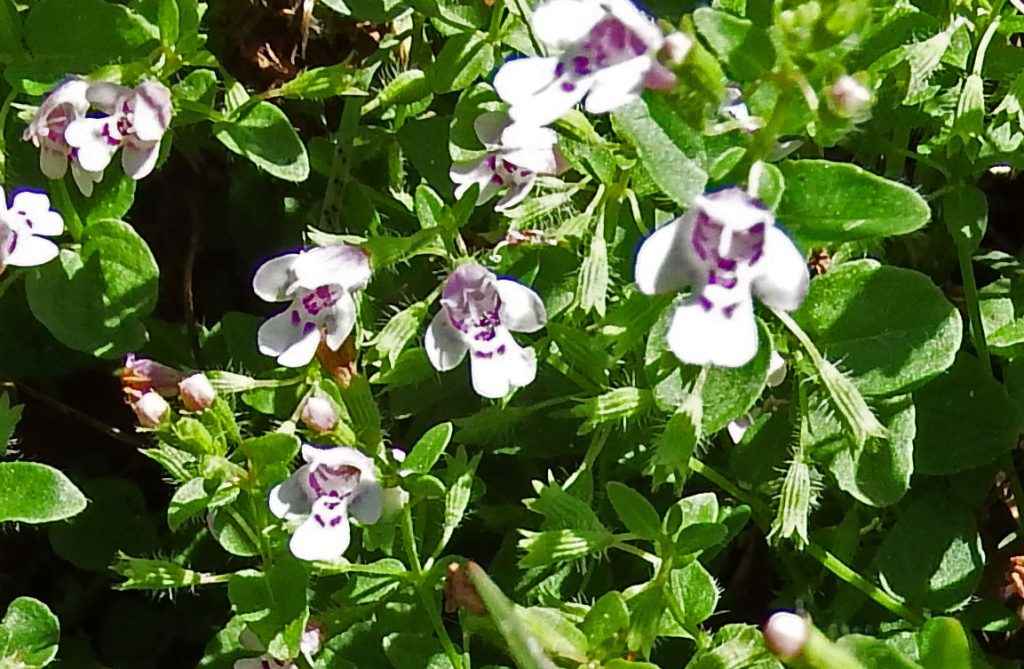
These tiny flowers are smaller than your pinky fingernail. And so intricate they might as well be orchids!
Sometimes I go to the Park to look for something particular that I plan to write about. But often, I simply go on a tiny safari. Safari is a Swahili word for a journey that has come to mean an expedition in search of interesting animals. Mine are tiny safaris because they take place in the Park’s small wooded areas or fields of flowers and grasses. What I find are usually tiny things. But they are voyages of discovery none the less. The full drama and beauty of the natural world exists on almost every scale.
This week, I found something both mysterious and not particularly photogenic. But I want to write about it anyway because it’s totally cool. So to brighten up what might be a word-heavy post, I am adding photos and captions of things I saw this week but those photos don’t illustrate the text. Except this next one.
The text is about holes in the ground. Very small holes. They are bee nests!
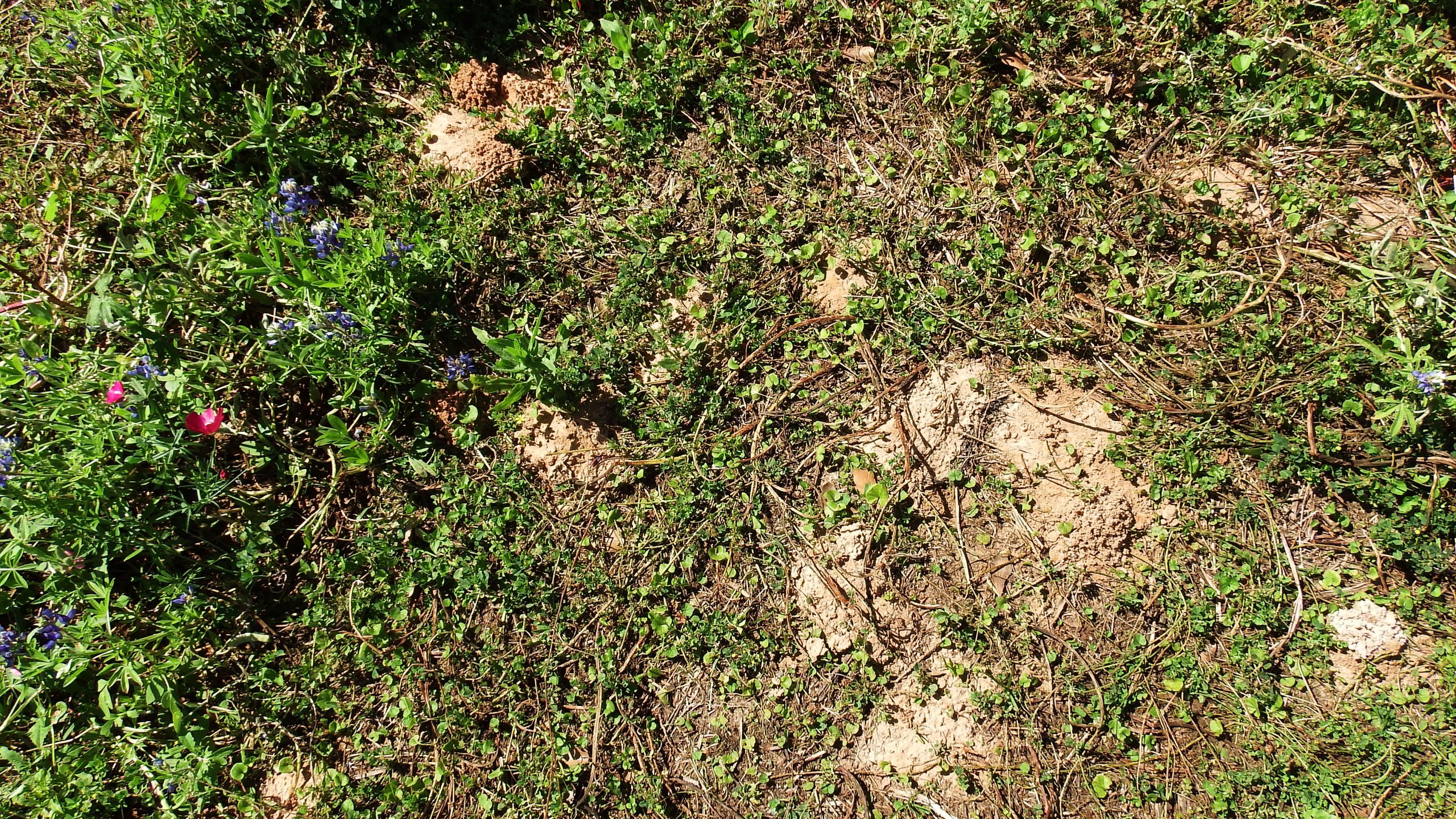
You probably think of bee nests as the hives made by European honey bees. But they alone among bees make honey and live in a hive and they aren’t native to North America (the word European in the name was the clue). Even before Europeans brought their delightful little bees to America, crops were still pollinated and flowers bloomed and went to seed. That work was done by native bees and other native pollen/nectar eaters.
We have over 600 species of native bees in Texas and 70% of them nest in the ground either on their own or in small groups. Each bee burrows a tunnel often with individual rooms branching off. Some bees line their nests with secretions, others drag in the tiny hairs off plant stems and fashion a cozy nest from those. Some section their tunnels into individual rooms with small snippets of leaves they have cut for this purpose. However the bee makes her nest, she carefully excavates and prepares it. This is her life’s work.
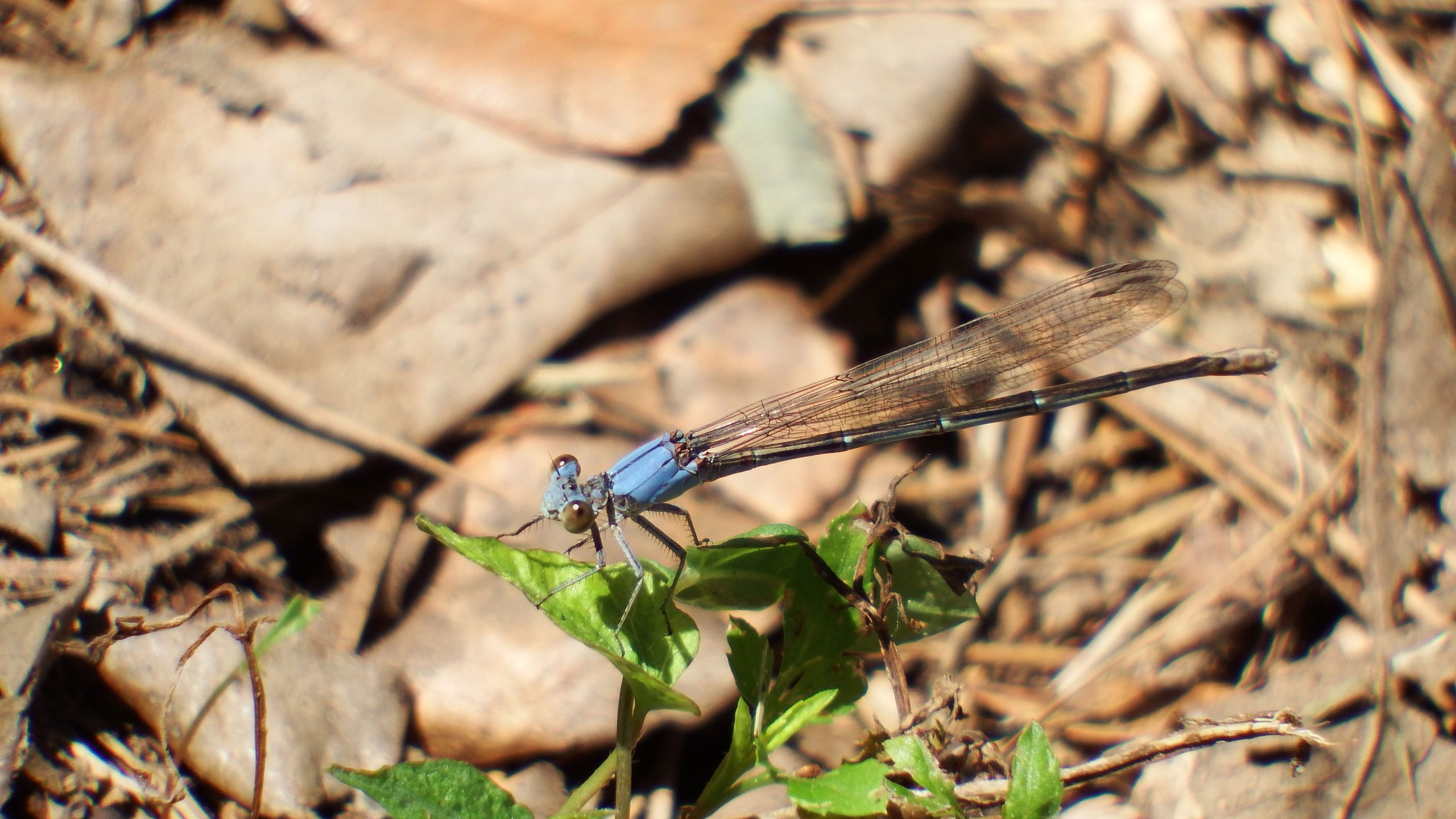
This damselfly is startlingly beautiful, with her three eyes (there’s a small one on top). See those two spikes on the top of he head. They are air-speed indicators. She is beautiful and deadly, if you are a flying insect!
Once she has her nest prepared, she can begin to lay her eggs. She has already mated with a male bee and has stored his sperm to mix with her eggs once the nest is ready. When you see a bee visiting flowers, gathering pollen and nectar, she is making dinner for her yet-to-be-born children. She makes a loaf out of the nectar and pollen, one for each offspring. She fashions the rooms of her nest and fills each with an egg and a loaf. She will never see her offspring, likely dying not long after laying her eggs.
A bee lives for about a year, but most of that time is spent below ground as an egg, larva and pupa all the while living off that loaf that mom left behind. Once the adult bees emerge, they will usually live only a few months. Just long enough to find a mate and, if you are female, make a nest.
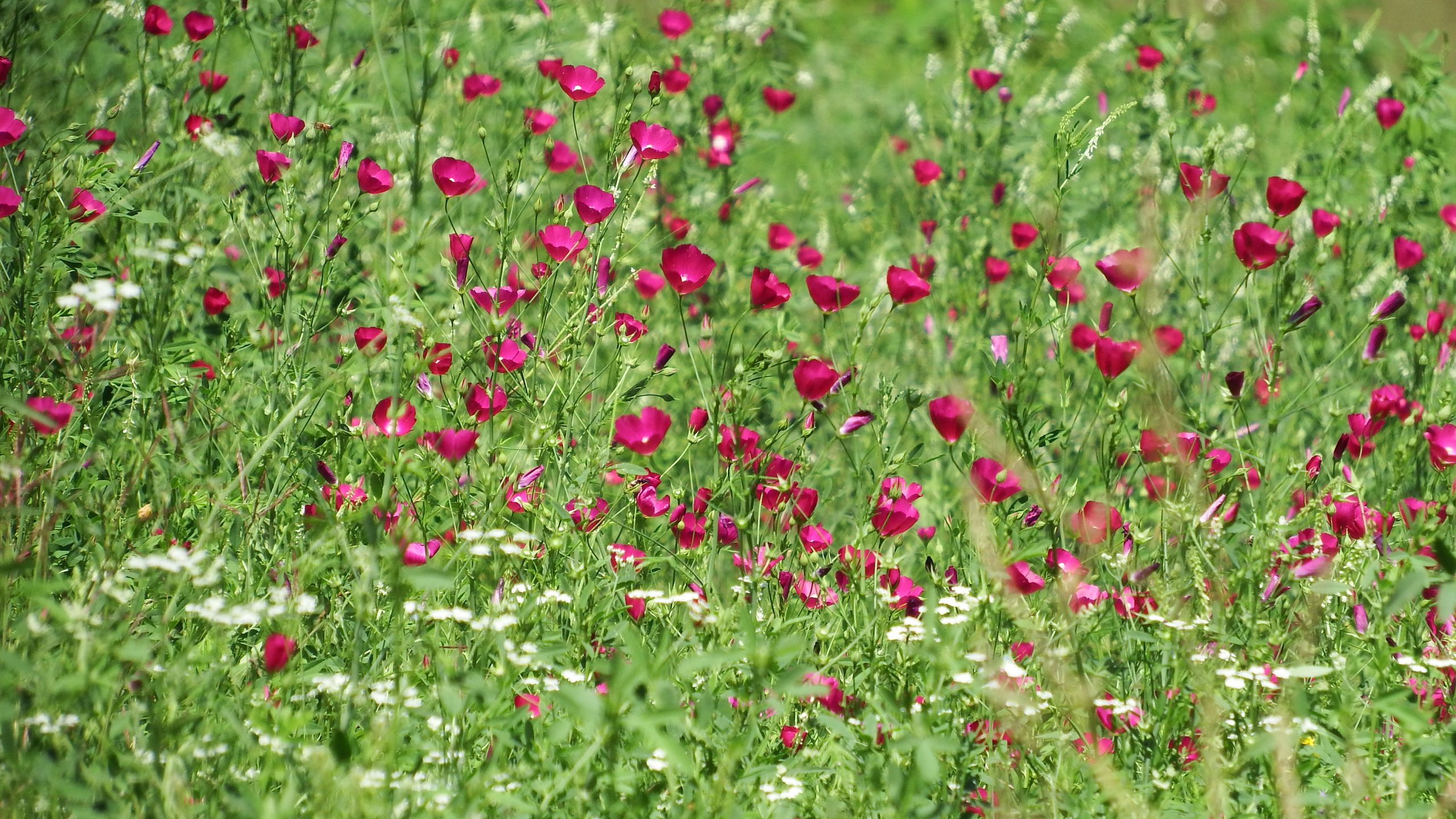
A field of wine cups and common hedge parsley.
Someone recently asked me about whether native bees can sting; she was under the impression they didn’t. I wish I remembered who asked the question so I could answer directly, but perhaps she is reading this. Native bees are equipped with stingers but they are far less likely to use them.
A stinger is a modified ovipositor (the egg-laying organ). Because of this, only female bees can sting. Male bees lack the organ. European honey bees are rather likely to sting. They live in a large colony and the value of a single life is insignificant in comparison to the hive. To protect the colony, honey bees will gladly sting you and forfeit their lives knowing that their colony will survive. Native bees don’t have colonies. They live solitary lives and have one purpose, to reproduce. If they sting and die, they have failed their purpose. Probably because of this, they have evolved with the ability but without the drive. They can sting you, but most likely won’t. The tiny ones have stingers so weak, they can’t penetrate the skin.
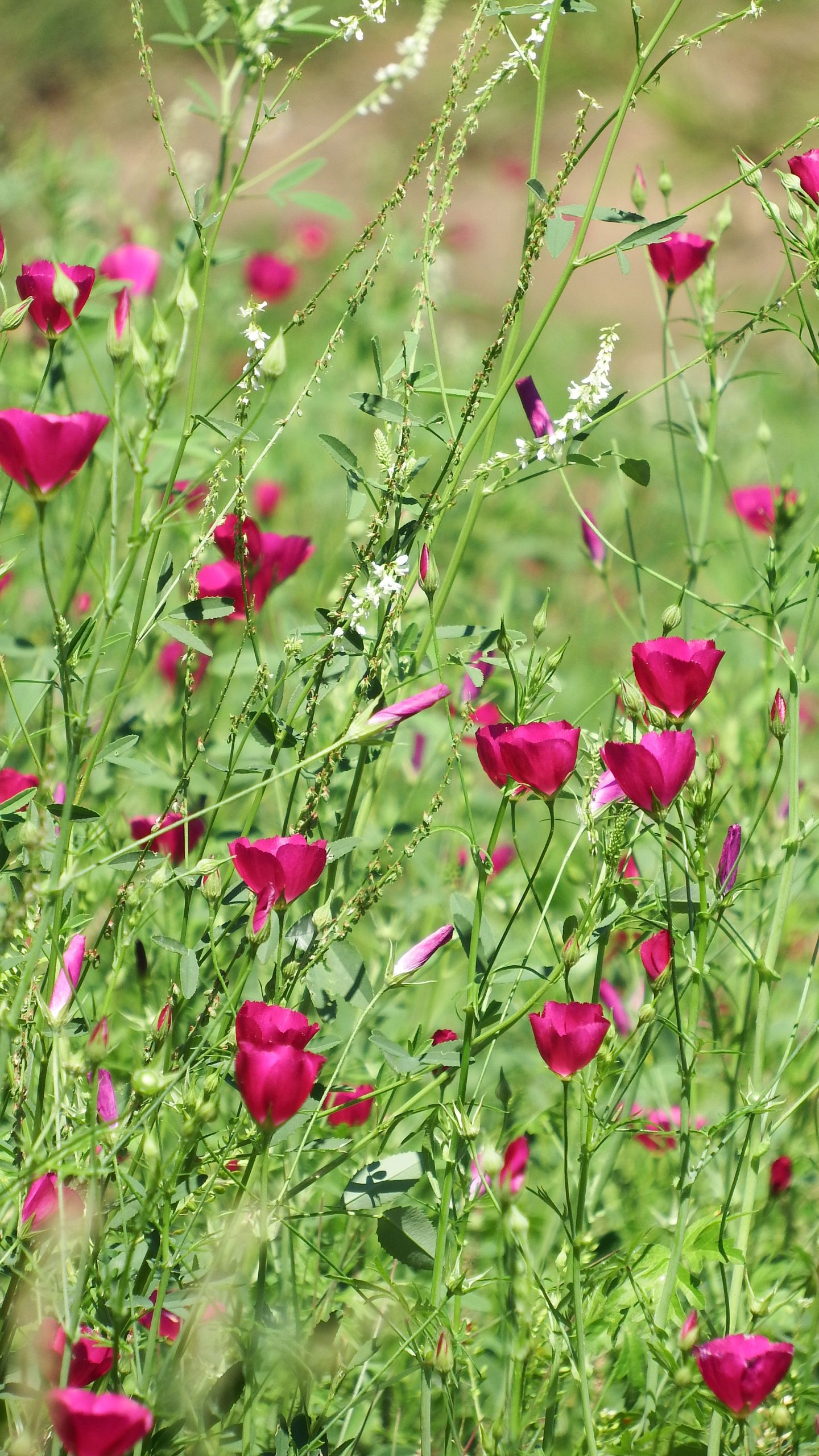
Winecups and smartweed.
All of these bee nests were found in the wonderful meadow full of wildflowers on the south side of the bayou between Jackson Hill and the bat bridge. I was carefully walking through the meadow, entranced by the flowers, the bees and everything else that was feasting on the abundance of pollen and nectar when I began to notice small mounds of sand and silt. I carefully brushed away a little pile and found a small round hole bigger than a hole ants would use, maybe the diameter of your pinky finger.
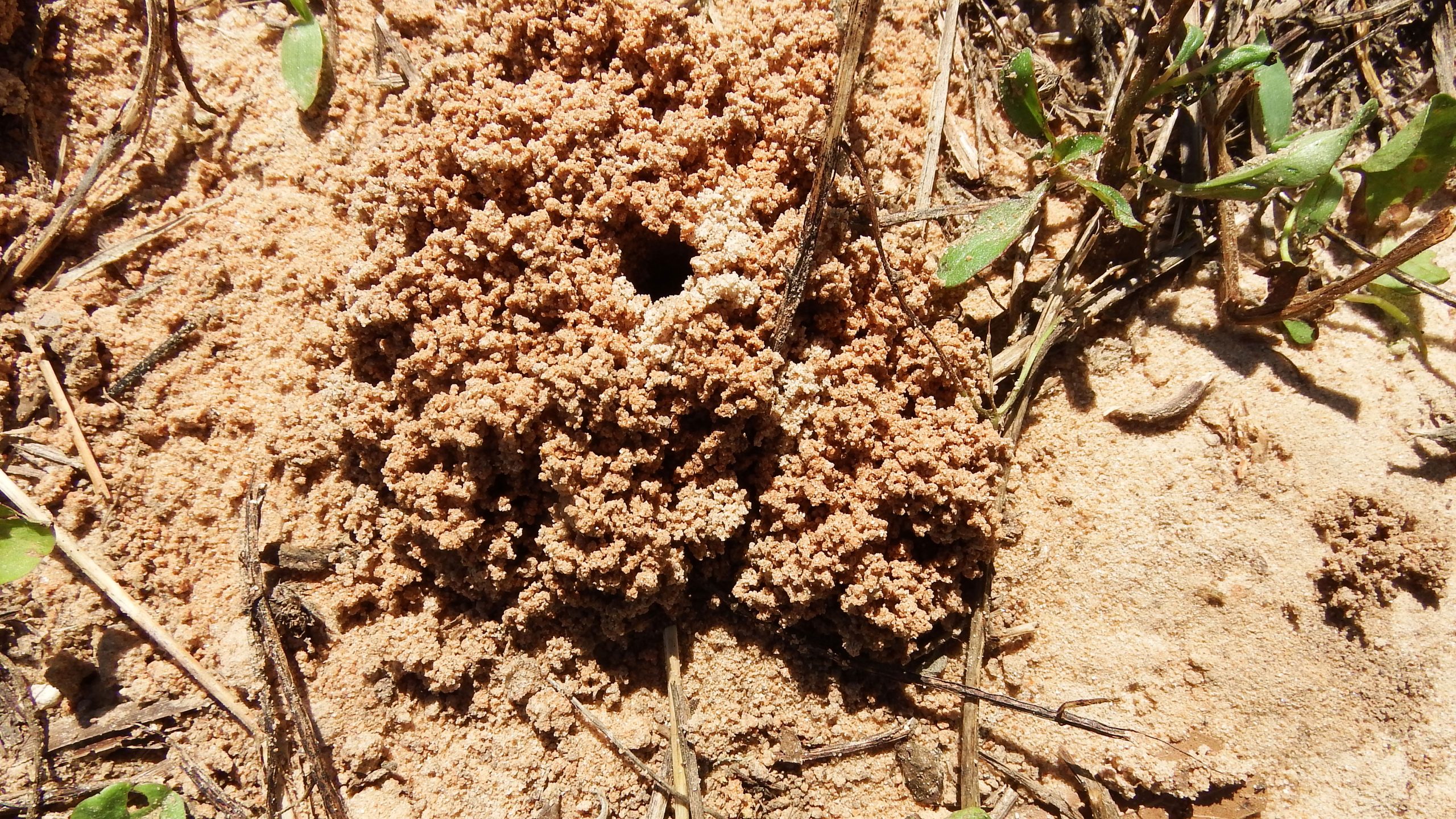
A single bee’s nest.
I began noticing them all over. Some were solitary, others in groups. This is what you might expect. Some species of native bees nest in colonies and others nest alone. Last year, I ran into a velvet ant on the other side of the bayou. These nests are exactly what she was looking for. She lays her eggs right on the bee eggs. Her larva hatch first and eat the bee, and then feast on the loaf our mother bee has so carefully prepared.
If you do go off the trail to look for interesting things, please don’t dig up a bee nest. It would be amazing to see what’s inside, but a bee gave her entire life for that nest.
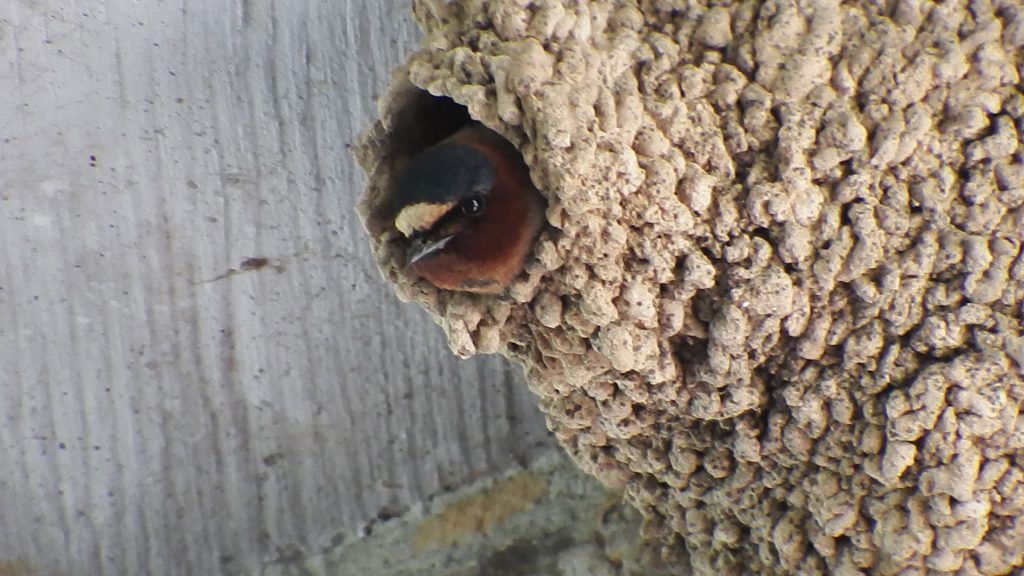
The cliff swallows have returned to their colony beneath the bat bridge.

